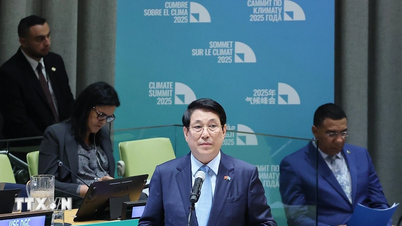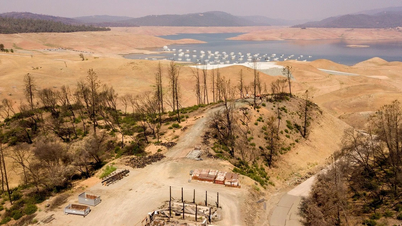New research shows that Earth's surface temperature is on track to rise 2.7 degrees Celsius above pre-industrial levels by 2100, pushing more than 2 billion people (about 22% of the global population) out of their comfortable climate zone.

Billions of people could be exposed to dangerous heat waves by the end of the century. Photo: Los Angeles Times/TNS
The new study, published in the journal Nature Sustainability, found that the countries with the most people facing dangerous heat are India (600 million), Nigeria (300 million), Indonesia (100 million), the Philippines and Pakistan (80 million each), AFP reported on May 22.
Limiting global warming to 1.5 degrees Celsius as targeted by the 2015 Paris Agreement would reduce the number of people at risk to under half a billion, just 5% of the world's projected population of 9.5 billion in the next six or seven decades.
So far, warming below 1.2°C has also increased the intensity or duration of heatwaves, droughts and wildfires. The past eight years have been the hottest on record.
“For every 0.1 degrees Celsius increase above current levels, about 140 million more people will be exposed to dangerous heat,” said Tim Lenton, director of the Global Systems Institute at the University of Exeter and lead author of the new study.
The new study defines dangerous heat as a threshold where the mean annual temperature (MAT) reaches 29°C. Throughout history, human populations have been most densely distributed around two MAT thresholds: 13°C (temperate zones) and 27°C (tropical zones).
Global warming is pushing temperatures up everywhere, but the risk of reaching deadly heat is higher in areas that are already close to the 29C threshold. Research shows that prolonged high temperatures at or above that threshold are strongly associated with higher mortality, lower labor and agricultural productivity, increased conflict and infectious disease.
Forty years ago, just 12 million people worldwide faced such harsh environments. Research shows that number has increased fivefold today and will increase even more in the coming decades.
The risk is concentrated in areas around the equator, where populations are growing fastest. Tropical climates can be dangerous even at lower temperatures because high humidity prevents the body from sweating to cool itself. Those most exposed to extreme heat live mainly in poorer countries with the lowest per capita carbon emissions.
According to the World Bank, India emits an average of about two tons of CO2 per person per year, Nigeria about half a ton. That compares with nearly 7 tons in the European Union and 15 tons in the United States.
The team also warned that the possibility of Earth’s surface temperature rising even beyond 2.7 degrees Celsius is possible. They said that if emissions lead to the release of natural carbon stores, such as permafrost, or a warmer-than-expected atmosphere, temperatures could rise by nearly 4 degrees Celsius above mid-19th-century levels.
Thu Thao (According to AFP )
Source link





![[Photo] President of the Cuban National Assembly visits President Ho Chi Minh's Mausoleum](https://vphoto.vietnam.vn/thumb/1200x675/vietnam/resource/IMAGE/2025/10/1/39f1142310fc4dae9e3de4fcc9ac2ed0)
![[Photo] Keep your warehouse safe in all situations](https://vphoto.vietnam.vn/thumb/1200x675/vietnam/resource/IMAGE/2025/10/1/3eb4eceafe68497989865e7faa4e4d0e)
![[Photo] Hanoi morning of October 1: Prolonged flooding, people wade to work](https://vphoto.vietnam.vn/thumb/1200x675/vietnam/resource/IMAGE/2025/10/1/189be28938e3493fa26b2938efa2059e)

















![[INFOGRAPHIC] DJI Osmo Nano Action camera, super compact, 4K 120fps recording](https://vphoto.vietnam.vn/thumb/402x226/vietnam/resource/IMAGE/2025/10/1/8408489112ee446dab897373255c827e)








































































Comment (0)